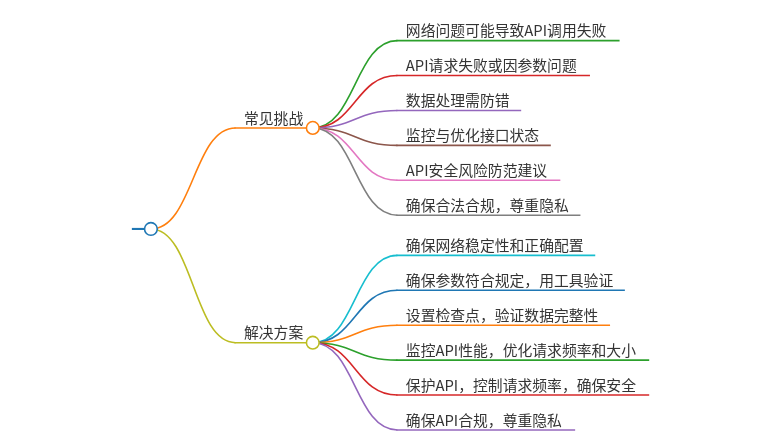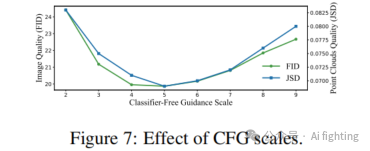Odrive内部存在一些非常好的设计,为了通篇掌握Odrive的设计理念和算法,对项目中采用的设计模式,数据结构和算法必须了解,本文梳理下Odrive中涉及到的一些重要的数据结构。
1. ComponentBase
所有支持update回调的类基类,支持传入一个时间戳用于实时更新对象内部状态。
class ComponentBase {
public:virtual void update(uint32_t timestamp) = 0;
};
子类有:
开环控制器类:OpenLoopController
FOC控制器类:FieldOrientedController
2. InputPort和OutputPort模板类
这两个类非常重要,是Odrive为了解耦各对象之间交互的桥梁,可以简化理解为两个对象之间通讯的中间件(只是类比),有了这个设计,模块可以很方便的连接外部输入源,还能管理输入源的生命周期。
template<typename T>
class OutputPort {
public:OutputPort(T val) : content_(val) {}void operator=(T value) {//关联数据content_ = value;age_ = 0;}void reset() {//强制让数据过期age_++;}std::optional<T> present() {//正值"壮年",数据是刚刚更新有效if (age_ == 0) {return content_;} else {return std::nullopt;}}std::optional<T> previous() {//上一个周期的数据if (age_ == 1) {return content_;} else {return std::nullopt;}}std::optional<T> any() {return content_;}private:uint32_t age_ = 2; T content_;
};template<typename T>
class InputPort {
public://将输入关联到特定的输入源--模板包装void connect_to(OutputPort<T>* input_port) {content_ = input_port;}//将输入关联到特定的输入源-原始指针void connect_to(T* input_ptr) {content_ = input_ptr;}//断开数据源void disconnect() {content_ = (OutputPort<T>*)nullptr;}//更新数据,实际上是获取的输入源数据std::optional<T> present() {if (content_.index() == 2) {OutputPort<T>* ptr = std::get<2>(content_);return ptr ? ptr->present() : std::nullopt;} else if (content_.index() == 1) {T* ptr = std::get<1>(content_);return ptr ? std::make_optional(*ptr) : std::nullopt;} else {return std::get<0>(content_);}}std::optional<T> any() {if (content_.index() == 2) {OutputPort<T>* ptr = std::get<2>(content_);return ptr ? ptr->any() : std::nullopt;} else if (content_.index() == 1) {T* ptr = std::get<1>(content_);return ptr ? std::make_optional(*ptr) : std::nullopt;} else {return std::get<0>(content_);}}private:std::variant<T, T*, OutputPort<T>*> content_;
};这两个类在很对地方都有用到,比如下面的代码就是把FOC控制的输入源关联到开关控制器的输出中:
axis_->motor_.current_control_.enable_current_control_src_ = (axis_->motor_.config_.motor_type != Motor::MOTOR_TYPE_GIMBAL);
axis_>motor_.current_control_.Idq_setpoint_src_.connect_to(&axis_>open_loop_controller_.Idq_setpoint_);
axis_->motor_.current_control_.Vdq_setpoint_src_.connect_to(&axis_->open_loop_controller_.Vdq_setpoint_);axis_->motor_.current_control_.phase_src_.connect_to(&axis_->open_loop_controller_.phase_);
axis_->acim_estimator_.rotor_phase_src_.connect_to(&axis_->open_loop_controller_.phase_);axis_->motor_.phase_vel_src_.connect_to(&axis_->open_loop_controller_.phase_vel_);
axis_->motor_.current_control_.phase_vel_src_.connect_to(&axis_->open_loop_controller_.phase_vel_);
axis_->acim_estimator_.rotor_phase_vel_src_.connect_to(&axis_->open_loop_controller_.phase_vel_);再比如下面代码将编码器的输出关联到控制器的相关输入上
controller_.pos_estimate_circular_src_.connect_to(&ax->encoder_.pos_circular_);
controller_.pos_estimate_linear_src_.connect_to(&ax->encoder_.pos_estimate_);
controller_.vel_estimate_src_.connect_to(&ax->encoder_.vel_estimate_);3. Timer类,用于做相关计时
template <class T>
class Timer {public:void setTimeout(const T timeout) {timeout_ = timeout;}void setIncrement(const T increment) {increment_ = increment;}void start() {running_ = true;}void stop() {running_ = false;}// If the timer is started, increment the timervoid update() {if (running_)timer_ = std::min<T>(timer_ + increment_, timeout_);}void reset() {timer_ = static_cast<T>(0);}bool expired() {return timer_ >= timeout_;}private:T timer_ = static_cast<T>(0); // Current stateT timeout_ = static_cast<T>(0); // Time to countT increment_ = static_cast<T>(0); // Amount to increment each time update() is calledbool running_ = false; // update() only increments if runing_ is true
};这个类配合下面的类和宏可以测量任意代码块的执行时间:
struct TaskTimerContext {TaskTimerContext(const TaskTimerContext&) = delete;TaskTimerContext(const TaskTimerContext&&) = delete;void operator=(const TaskTimerContext&) = delete;void operator=(const TaskTimerContext&&) = delete;TaskTimerContext(TaskTimer& timer) : timer_(timer), start_time(timer.start()) {}~TaskTimerContext() { timer_.stop(start_time); }TaskTimer& timer_;uint32_t start_time;bool exit_ = false;
};#define MEASURE_TIME(timer) for (TaskTimerContext __task_timer_ctx{timer}; !__task_timer_ctx.exit_; __task_timer_ctx.exit_ = true)
比如下面的代码就是测量热敏电阻算法更新的耗时:
MEASURE_TIME(axis.task_times_.thermistor_update) {axis.motor_.fet_thermistor_.update();axis.motor_.motor_thermistor_.update();
}4. Endpoint。用于对输入信号的极性检测进行封装
该类处理GPIO的输入状态进行拦截,同时考虑抖动的处理。
class Endstop {public:struct Config_t {float offset = 0;uint32_t debounce_ms = 50;uint16_t gpio_num = 0;bool enabled = false;bool is_active_high = false;// custom settersEndstop* parent = nullptr;void set_gpio_num(uint16_t value) { gpio_num = value; parent->apply_config(); }void set_enabled(uint32_t value) { enabled = value; parent->apply_config(); }void set_debounce_ms(uint32_t value) { debounce_ms = value; parent->apply_config(); }};Endstop::Config_t config_;Axis* axis_ = nullptr;bool apply_config();void update();constexpr bool get_state(){return endstop_state_;}constexpr bool rose(){return (endstop_state_ != last_state_) && endstop_state_;}constexpr bool fell(){return (endstop_state_ != last_state_) && !endstop_state_;}bool endstop_state_ = false;private:bool last_state_ = false;bool pin_state_ = false;float pos_when_pressed_ = 0.0f;Timer<float> debounceTimer_;
};

















